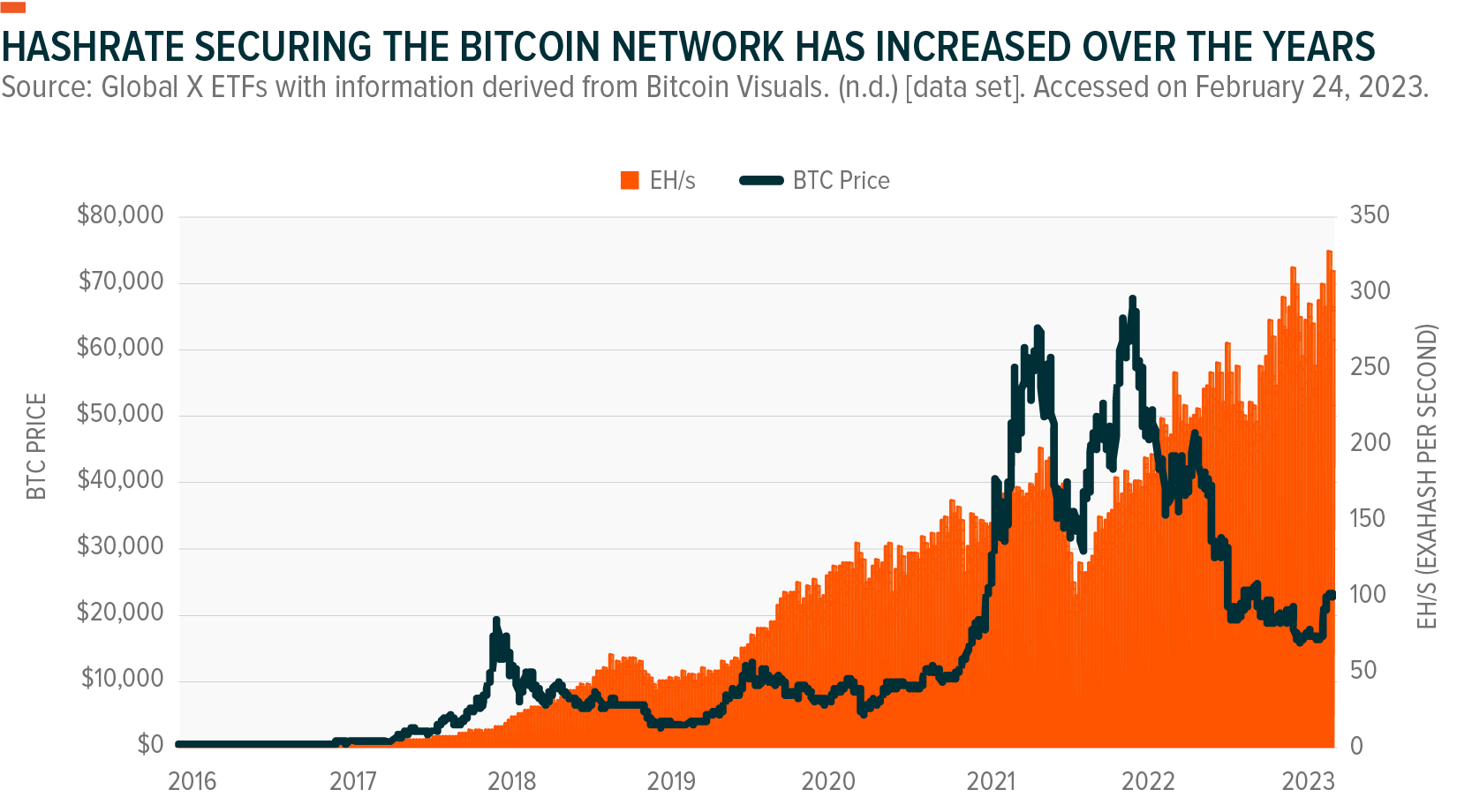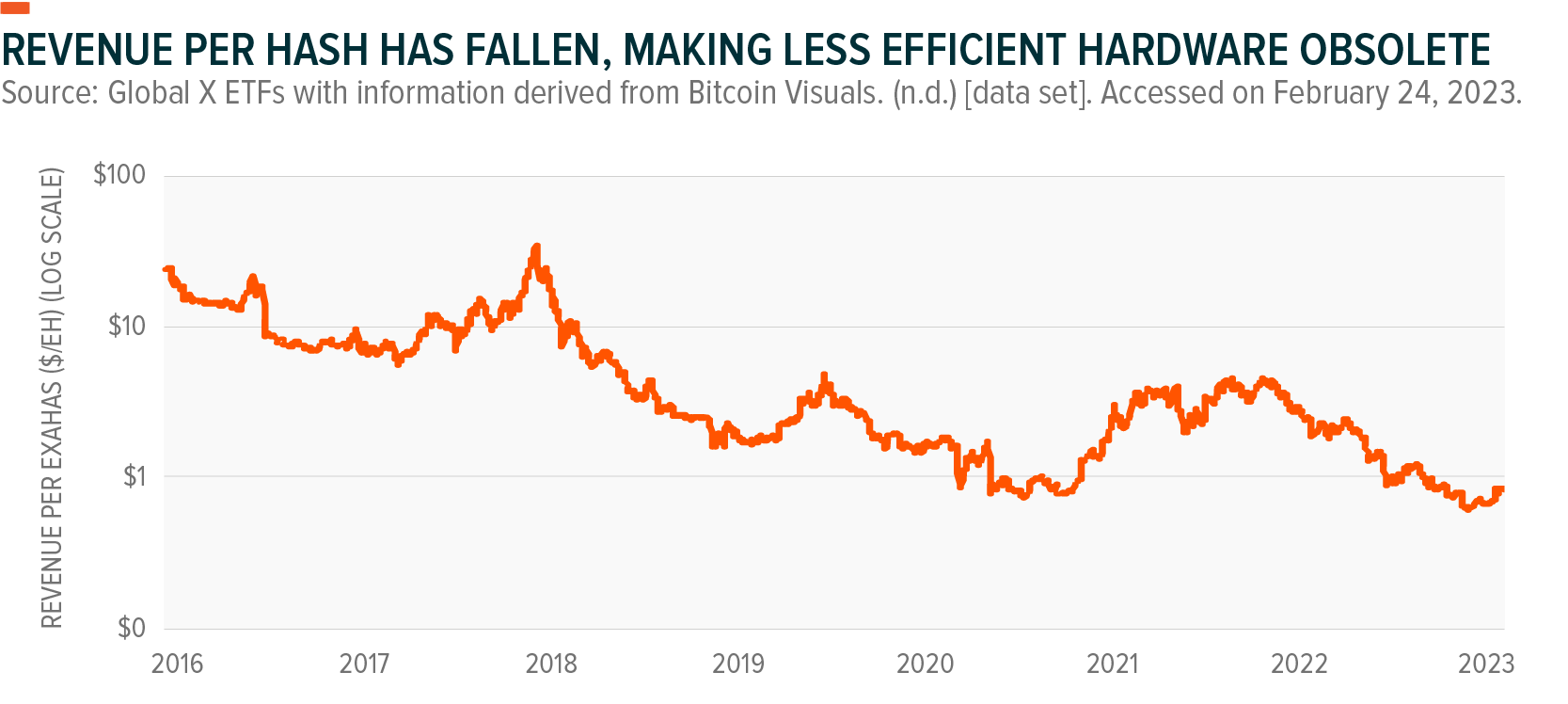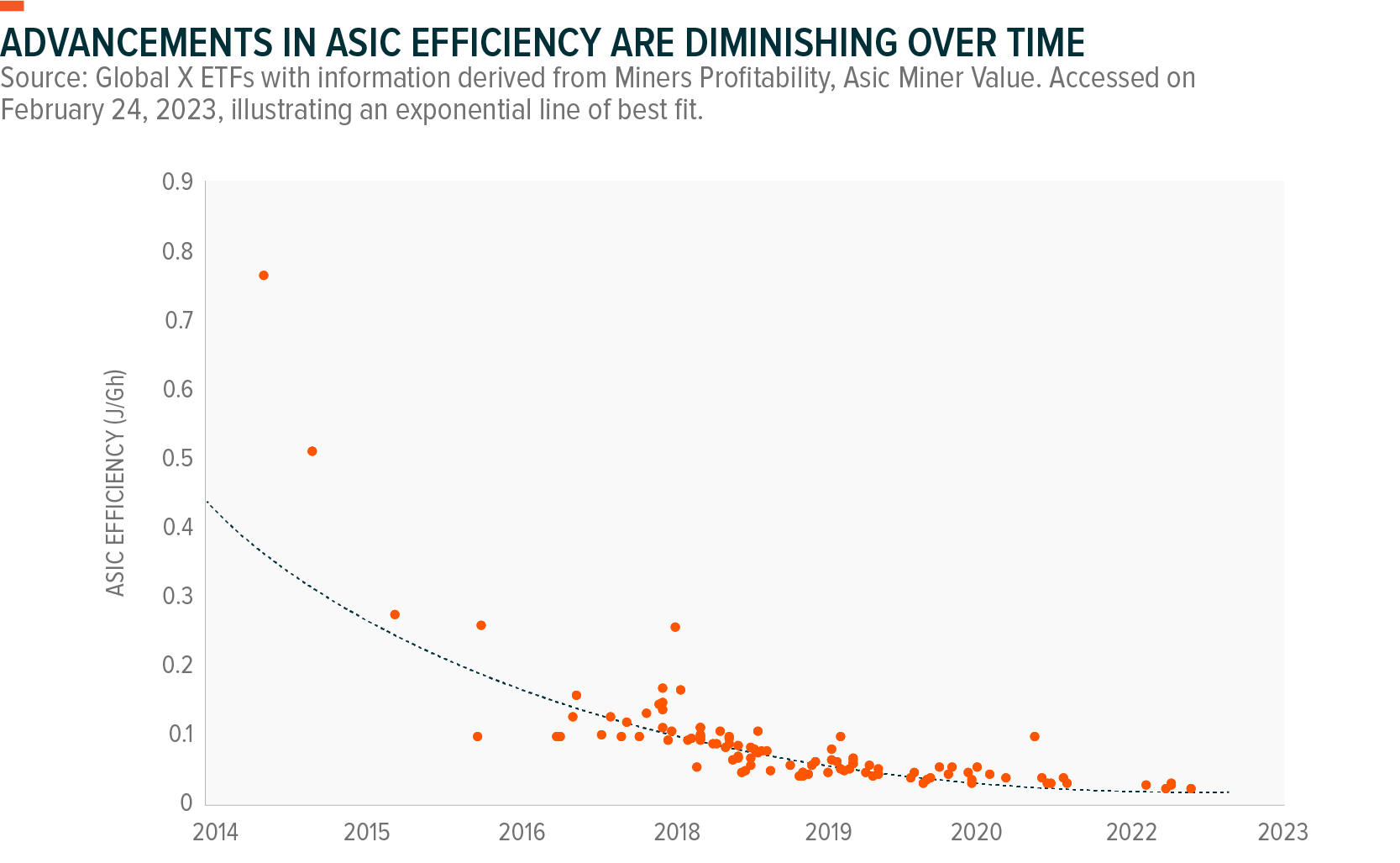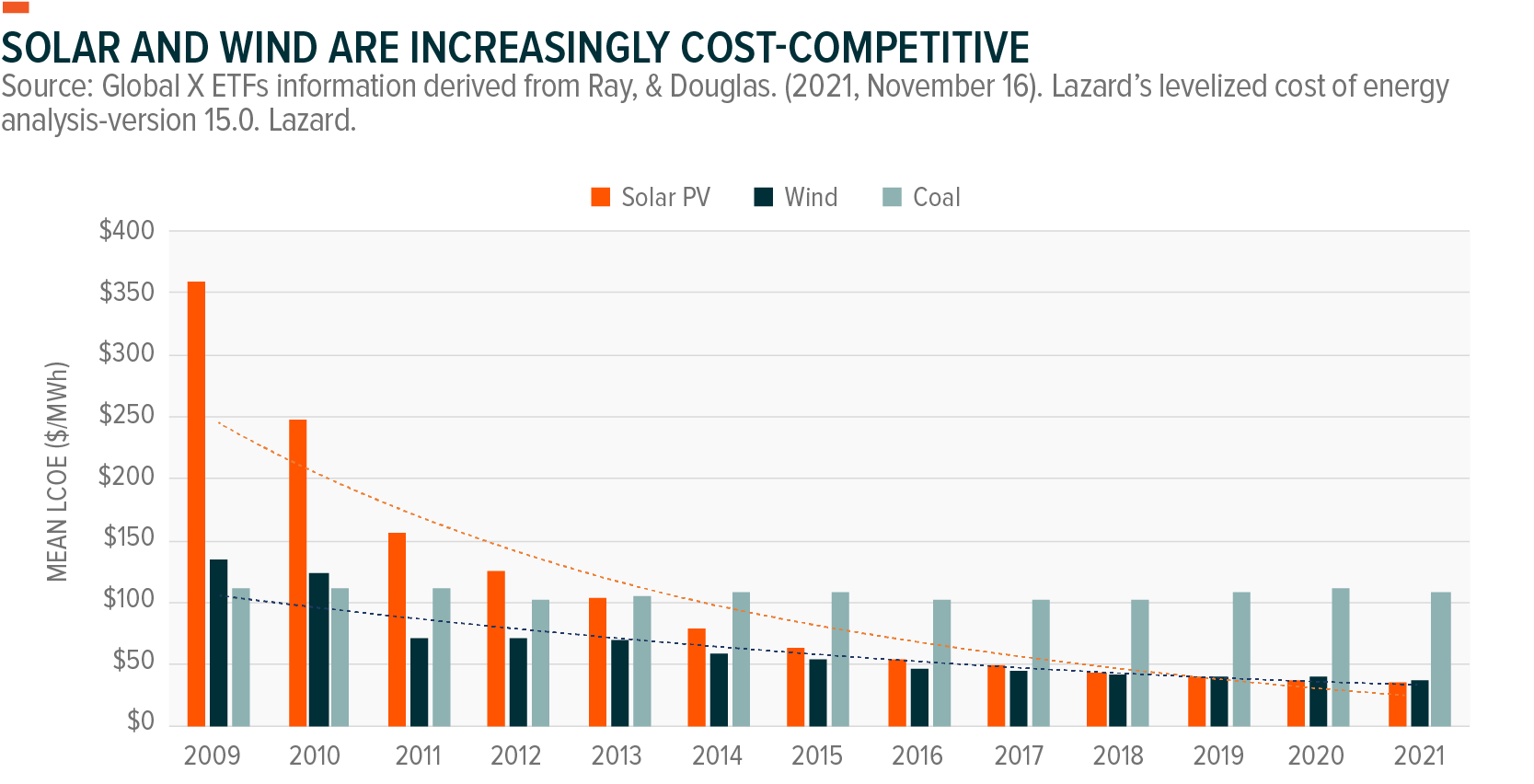The Bitcoin network’s security is derived from a process called Proof-of-Work (PoW) which is powered by advanced hardware and large amounts of electricity. In PoW mining, miners aggregate transactional data over a specific period and attempt to summarize this data into an encrypted output that is accepted by the rest of the network. This process is computationally-intensive and requires a significant amount of energy. Successful miners are compensated by the network with newly-created bitcoin. PoW mining’s energy requirement is not arbitrary, however. By requiring miners to expend resources to update the state of the shared ledger, tampering with historical data becomes extremely cost-prohibitive.
Today, the global bitcoin mining industry consumes the same amount of electricity as a small country such as The Netherlands.1 While the total electricity consumption is high, it does not tell the whole story. It is also essential to consider the significant advancements the mining industry has made in improving the energy efficiency of their operations, as well as the forces catalyzing the mining industry to adopt greater amounts of sustainably-sourced electricity into the mining process.
Key Takeaways
- Bitcoin miners compete to maximize their share of a fixed amount of mineable Bitcoin. Miners are incentivized to utilize efficient hardware and consume inexpensive energy to optimize profit margins.
- Advances in the efficiency of mining hardware have been impressive, but the pace of improvements is slowing. Utilizing the cheapest energy sources is becoming increasingly important to reduce operational costs.
- Renewable energy sources such as solar and wind are becoming increasingly cost-competitive. Adopting these energy sources into the mining process is a trend that is likely to accelerate in the mining industry, which may support a decrease in the Bitcoin network’s carbon footprint.
Miners Power ASICs to Earn a Share of Bitcoin Rewards
Application-specific integrated circuits (ASICs) are specialized hardware units used in the computationally-intensive process of bitcoin mining. These machines are tasked with “solving” a block of data and adding it to the blockchain. ASICs do this by aggregating transactional data across the network and pushing it through an encryption algorithm in search of an arbitrary output. This iterative process requires ASICs to make billions of guesses per second until the correct output is found.
Each individual computation made by an ASIC is referred to as a hash, and the number of hashes an ASIC produces per second is referred to as the hashrate. A single hash can be thought of as a lottery ticket to solving a block and earning a bitcoin reward. A miner’s share of the network’s aggregate hashrate—the amount of computing power generated by all ASICs on the network—represents the bitcoin rewards the miner can expect to earn over a given time period.
High Competition Requires Miners to Seek Operational Efficiencies
Bitcoin mining is highly competitive. As the network’s aggregate hashrate increases, mining operations that do not proportionally scale their hashrate become diluted and experience a decrease in expected bitcoin rewards. To remain competitive, miners are forced to continually increase their hashrate, resulting in an arms race for the most powerful and efficient ASICs. The first chart below shows how the hashrate securing the network has increased over time, while the second chart demonstrates how increasing competition has led to a decrease in the average income per hash.


To maintain profit margins in the face of these competitive forces, miners can either utilize more efficient mining hardware that maximizes hashrate per unit of energy consumed, or they can power their mining devices with the cheapest energy available.
The Importance of Energy Efficiency Grows as Hardware Advances Slow
The early days of industrial-scale bitcoin mining were defined by miners competing to maximize energy efficient hashrate by using the latest-generation ASICs. Rapid advancements in semiconductor technology fueled this competition as ASICs saw exponential improvements in hashrate efficiency in a matter of years. Compared to their 2014 counterparts, today’s ASICs are roughly 36x more energy efficient as measured by Joules of energy consumed to produce 1 gigahash (1 billion hashes) of computing power.2 However, the efficiency gains in ASIC technology are becoming increasingly marginal, as illustrated in the chart below.

In the face of slowing ASIC advancements, the dominance of hardware as the main determinant of a miner’s profitability will likely diminish. In its place, cost-competitive energy will likely become an increasingly important input.
Economic Alignments Incentivize Miners to Adopt Renewable Energy
Miners are incentivized to operate in locations with the cheapest and most accessible energy available. Expanding operations in places suitable for solar and wind farms is a compelling option. While these energy sources currently have reliability limitations, solar and wind energy have become more affordable than fossil fuel sources, as illustrated in the chart below.

The bitcoin mining industry is taking note of the cost benefits of renewable energy. Recently, a number of industry-leading miners began a transition of their operations away from fossil fuel sources of energy. Among these, Marathon Digital relocated operations from a coal-powered mining facility in Montana to more sustainable facilities including a wind-powered facility in King Mountain, Texas in Q3 2022.3 The Bitcoin Mining Council (BMC), a global forum of mining companies that represents 48.4% of the worldwide bitcoin mining network, estimated that in Q4 2022, renewable energy sources accounted for 58.9% of the electricity used to mine bitcoin, a significant improvement compared to 36.8% estimated in Q1 2021.4
Halvings Could be Another Catalyst for Renewable Energy Adoption
In addition to competition, bitcoin halvings could also accelerate green energy adoption among miners. Halvings happen every 210,000 blocks, approximately every four years.5 As the name suggests, halvings reduce bitcoin block rewards by 50%, which lowers revenues earned by bitcoin miners by almost the same amount if there is no change in the price of bitcoin. Expected in 2024, the next halving will reduce block rewards from 6.25 BTC to 3.125 BTC issued per block.6 With competition and halvings pressuring miners to seek out efficiency gains wherever possible, bitcoin miners are discovering that environmentally sustainable practices may be the next frontier to explore.
Related ETFs
BKCH – Global X Blockchain ETF
Click the fund name above to view current holdings. Holdings are subject to change. Current and future holdings are subject to risk.
 Rohan Reddy
Rohan Reddy Global X Research Team
Global X Research Team